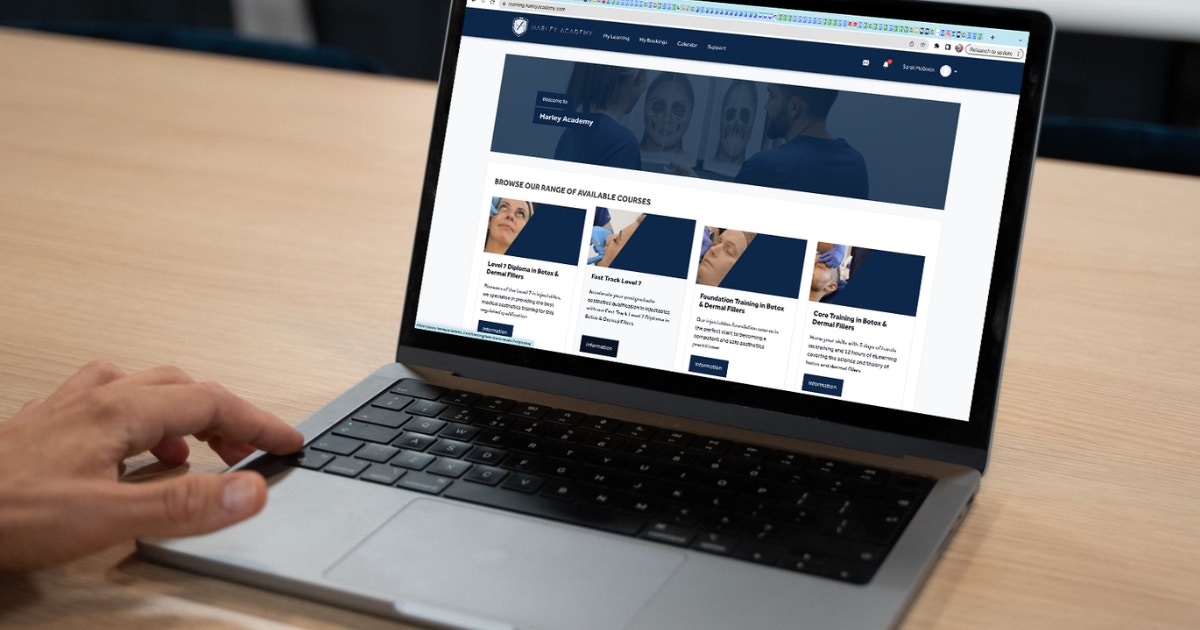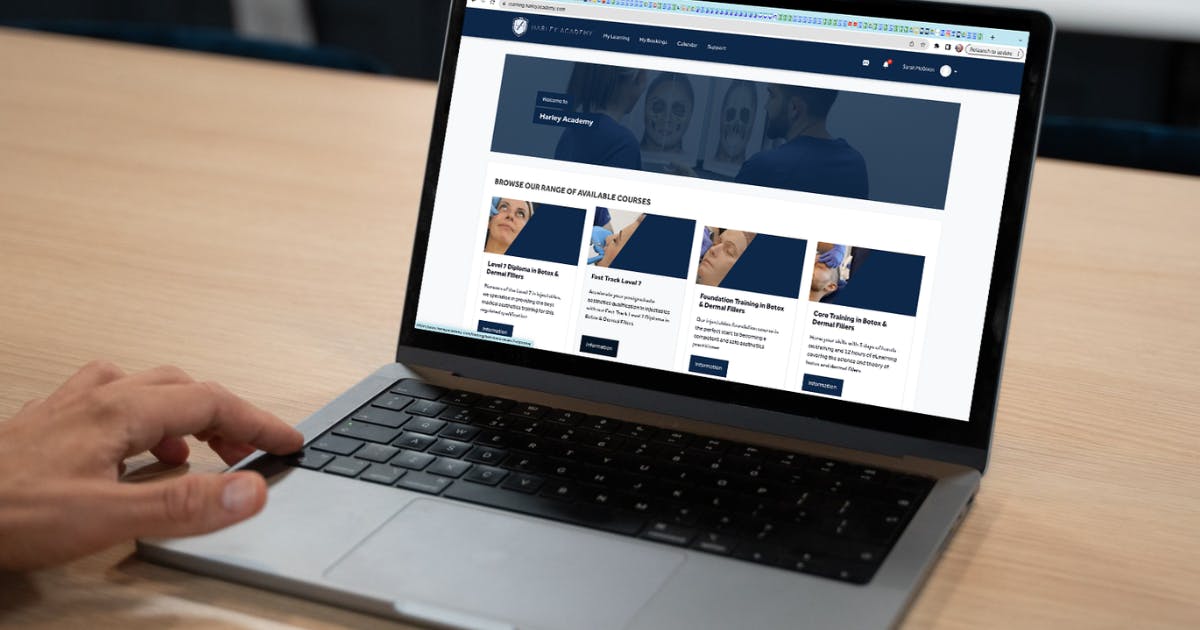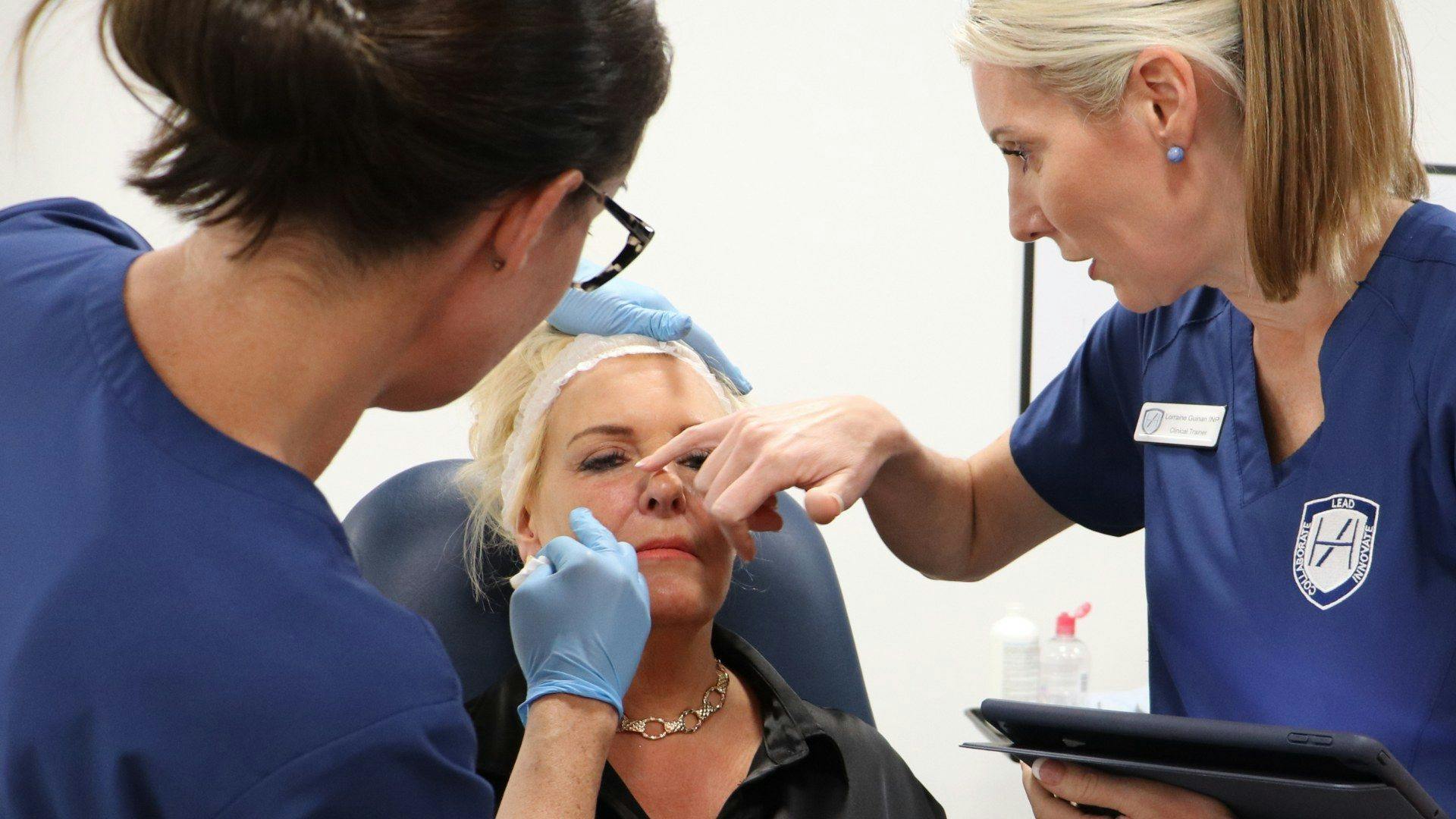Can I Offer Injectables I've Covered in My Level 7 eLearning?

Trainees undertaking the Harley Academy Level 7 Diploma in Botox & Dermal Fillers complete a vast suite of eLearning. This discusses a number of injectable treatments that are not taught during mentoring sessions. For example, tear trough and non surgical rhinoplasty treatments
As a result, Level 7 students and graduates often ask if they’re able to offer these treatments to patients. To answer this question, you have to consider your knowledge, skills and competence delivering these treatments. You also need to assess more formal aspects, such as qualifications and indemnity cover.
We spoke to our director of education, Dr Kalpna Pindolia to find out more…

What does the Level 7 in Injectables eLearning cover?
Dr Kal explains, "The Level 7 Diploma qualification focuses on the required practical and theoretical knowledge to enable the learner consistently to administer safe, effective and appropriate injectable, clinical aesthetic treatments.”
“Our Level 7 eLearning provides a wealth of education in the theory of aesthetic medicine, facial anatomy and skin ageing. It covers many areas of aesthetic practice,” she advises.
Specifically, these areas include:
- Patient selection and assessment
- Demonstrations of various injecting techniques
- Ethics, professionalism and legal aspects of medical aesthetic practice
- Psychological considerations in aesthetic medicine.
Which treatments are mentioned within the eLearning that are not covered during students’ aesthetics mentoring?
“Mentoring is practical training,” explains Dr Kal. “This includes observed and supervised cases that contribute to a case portfolio as part of the Level 7 assessment. These are run in a real-life clinic scenario, so are crucial to your practical experience treating cases. As a qualification for new injectors, these cover foundation treatments, such as cheek filler, lip and nasolabial filler.
“There are other more advanced treatments also discussed in the eLearning. This includes treatment of infraorbital hollows with tear trough filler and non surgical rhinoplasty. It also includes advanced Botox treatments. These are not proactively taught during practical training for the Level 7 Diploma in Botox & Dermal Fillers.”
Why does this eLearning include information on treatments trainees do not cover in practical sessions?
“The Level 7 Diploma in Botox and Dermal Fillers will take you through to a Master’s level of injectables practise. You’ll finesse your approach to all the cornerstone facial aesthetics treatments,” notes Dr Kal.
“Aesthetic medicine requires an on-going commitment to learning, so understanding the theory of treatments that are available will inform your continuing professional development plans. Being aware of various treatments, even if you haven’t been taught to administer them, also helps you to have a broader understanding of what’s happening in aesthetics. This is why the eLearning scope is broad.”
Treatment plans for a patient may include multiple options. It’s important to understand what all the options are for addressing particular concerns - even those that are beyond your competence. This is so your patient is informed of all their options as part of the consent process. As such, this can include treatments we do not teach as part of the course and treatments you have no experience of delivering.
There are new treatments and techniques developing all the time. Some will have more valid outcomes, others will be based on the market and current trends. There can also be various levels of evidence and safety profiles behind the treatments. We, therefore, also assess their validity in the space before teaching them.

Can Level 7 trainees or graduates offer treatments to patients that they have covered in their eLearning, but have no practical injecting experience of?
“Most of the time, we do not recommend offering injectable treatments to patients that you have not had practical training in,” states Dr Kal. “However, this can be nuanced. For example, delivering a supraperiosteal bolus in the cheek apex requires the same skill as delivering a supraperiosteal bolus in the gonial angle, even if you have not done it before.
“The main consideration is your broader competence, including understanding the anatomy and product you’ll use with what technique.
“Furthermore, it’s likely to be a stipulation of your insurance cover that you must be able to demonstrate adequate training in any treatments you carry out. Should anything go wrong, you would need to make the case that you were properly trained in this treatment.
“We advise that you always check with your insurance provider before making your decision.”
Consider your level of experience
“Another consideration is experience level,” points out Dr Kal. “For example, tear trough treatments requires a more experienced injector. It’s technically more challenging. Non surgical rhinoplasty should also not be delivered by inexperienced providers. This is because the treatment has a much increased safety risk. Some experienced injectors even choose not to deliver these due to the increased risks in comparison to other treatments.
“You would need to demonstrate and justify your level of competency specific to the treatment in question. eLearning-only knowledge does not prepare you sufficiently to treat patients, especially for advanced treatments.
Consider your confidence as a Level 7 aesthetics practitioner
“Another aspect to consider here is your own confidence,” highlights Dr Kal. “You can start practising after completing the Foundation elements of your Level 7 and getting the necessary insurance. However, it’s advisable to stick with what you’ve been taught during practical training as you won’t have much experience at this stage.”
She goes on to state, “We personally believe a one day course is not enough to start treating patients independently and advise more aesthetics training first.”
Grow at your own pace in line with your confidence and competence
“Many aesthetics practitioners only offer toxin for a while in order to become really familiar with everything that comes with treating these patients. They feel that by focusing on the more prescriptive treatments, you can give yourself plenty of time to provide a great service and thorough consultation, whilst also building your confidence as an injector. With more experience, they also discover that a tailored treatment leads to better aesthetic outcomes.
“With filler treatments, again, go at your own pace - you might want to start with just cheeks, or just lips, and build from there.
“A great way to do this is to introduce treatments to your practice as you start to feel more comfortable administering them during your Level 7 mentoring sessions. That way, your service offering will grow organically in line with your skills.
“Remember that you do not know what you do not know, when venturing into a new scope of medical practice. Don’t run before you can walk and get the fundamentals in place before progressing onto more advanced treatments. This will keep your patients and practise safe.”
This is a point our founder and CEO, Dr Tristan Mehta has also been vocal about. You can watch his video on this, below.
How can Level 7 students and graduates get practical experience of these treatments that are currently outlined in eLearning only?
After your Level 7 in injectables, we advise that you continue your journey towards aesthetics specialist status by investing in dedicated medical aesthetics training that focuses on the specific treatments you wish to learn about.
Remember, you’ll generally get the best experience from one-to-one or small group training sessions. Most importantly, you’ll learn far more from treating your own, individual patient.

Injectables Masterclasses
We offer a number of Injectables Masterclasses which may be useful in this regard. Each includes dedicated eLearning and observation of an expert treatment demonstration. You’ll also treat your own patient, provided by us, under the supervision of our clinical trainers.
These Masterclasses are kept to small number of attendees in order to allow every delegate to get as much attention as they need in a supportive environment.
Our current Injectables Masterclasses roster covers:
- Tear Trough Filler
- Cheek, Lower-Face and Mid-Face Filler
- Perioral and Lip Filler.
These can be great for building your treatment portfolio and experience outside of practical Level 7 training. They can also really hone your skills in treatments you know your particular patient base is looking for. For example, tear trough filler, piriform fossa filler, and ways to treat smoker’s lines.
Do remember that you need to be relatively experienced, especially with a cannula, for tear trough filler training.
Get personalised advice
To discuss your options to enhance your aesthetics practise through higher education opportunities, call our Courses Advisors. They’ll listen to your goals, guide you through your options and find the best medical aesthetics training for you.
All information correct at the time of publication
Download our full prospectus
Browse all our injectables, dermal fillers and cosmetic dermatology courses in one document
By submitting this form, you agree to receive marketing about our products, events, promotions and exclusive content. Consent is not a condition of purchase, and no purchase is necessary. Message frequency varies. View our Privacy Policy and Terms & Conditions
Attend our FREE open evening
If you're not sure which course is right for you, let us help
Join us online or in-person at our free open evening to learn more
Our Partners














STAY INFORMED
Sign up to receive industry news, careers advice, special offers and information on Harley Academy courses and services

